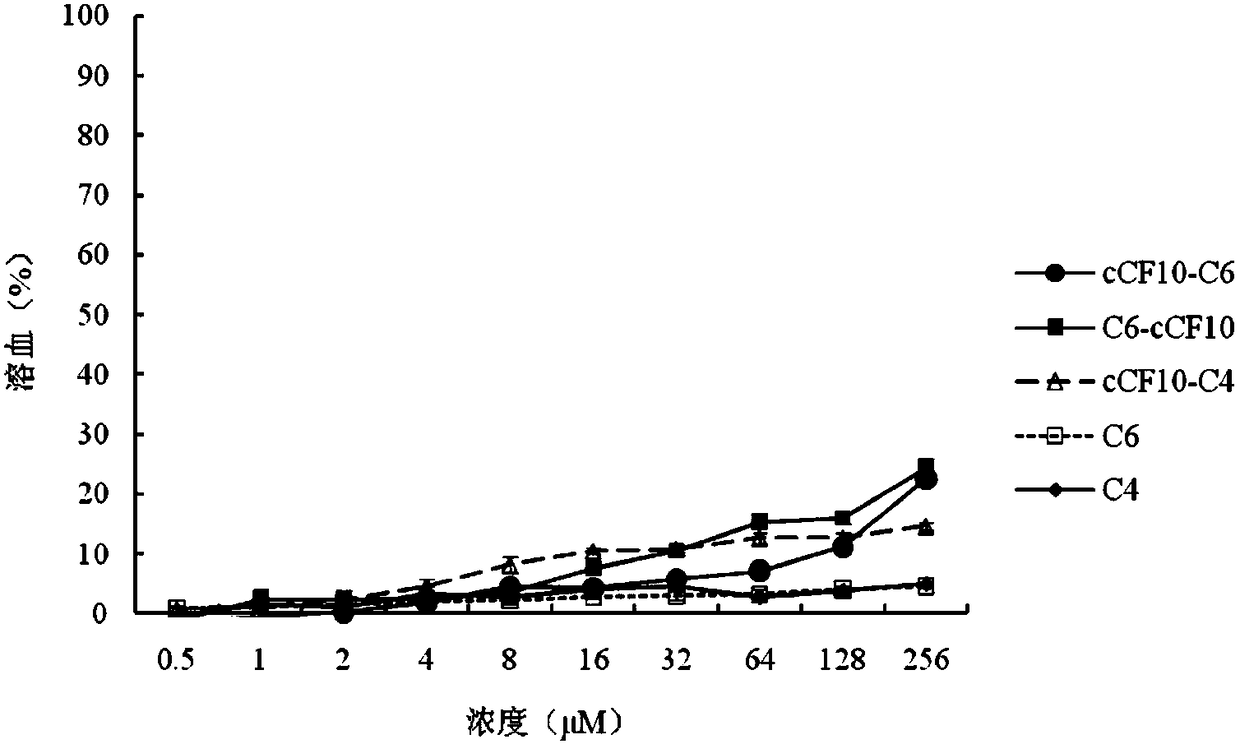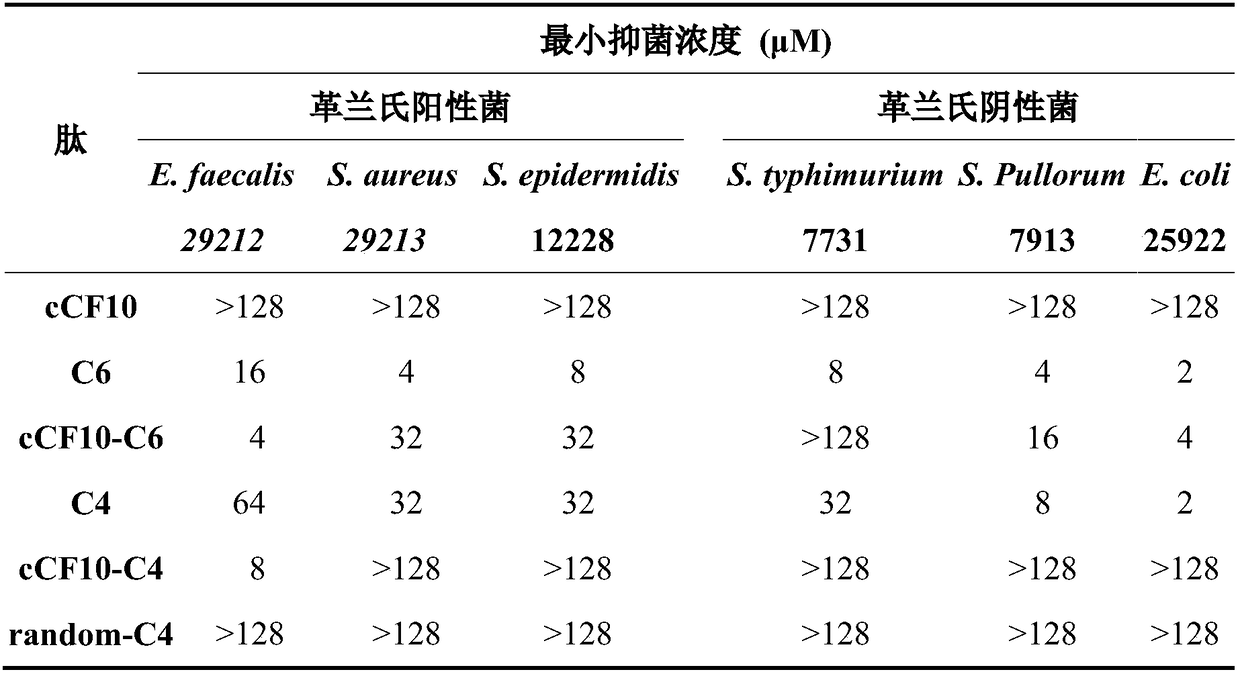A kind of targeting antimicrobial peptide and its preparation method and application
An antimicrobial peptide and targeting technology, applied in the field of targeted antimicrobial peptide and its preparation, can solve the problems of microbial drug resistance mutation, prolonging the treatment cycle, and destroying microecological balance
- Summary
- Abstract
- Description
- Claims
- Application Information
AI Technical Summary
Problems solved by technology
Method used
Image
Examples
Embodiment 1
[0017] In this example, the two methods of combining pheromone labeling technology and optimizing the number of positive charges are used to achieve the optimal specificity effect on the target bacteria. Enterococcus faecalis was used as the target bacteria to design the antimicrobial peptide cCF10-C4. A series of multi-domain antimicrobial peptide molecules selective for Enterococcus faecalis were constructed in a combined manner. The molecular design of this series of antimicrobial peptides mainly includes two independent functional areas, namely the bactericidal area and the recognition area.
[0018] Design of Antimicrobial Peptides
[0019] Using the broad-spectrum antimicrobial peptide C6 as the parent peptide, the pheromone cCF10, which has a specific recognition effect on Enterococcus faecalis, was selected as the recognition region, and GGG was used as the linker to connect the two functional regions. The antimicrobial peptide cCF10-C6, on this basis, replaced the K ...
Embodiment 2
[0023] Synthesis of pheromone-labeled antimicrobial peptides by solid-phase chemical synthesis
[0024] 1. The preparation of antimicrobial peptides is carried out one by one from the C-terminal to the N-terminal, and is completed by a peptide synthesizer. First, Fmoc-X (X is the first amino acid at the C-terminal of each antimicrobial peptide) is inserted into Wang resin, and then the Fmoc group is removed to obtain X-Wang resin; then Fmoc-Y-Trt-OH (9 -Fmoxy-trimethyl-Y, Y is the second amino acid at the C-terminus of each antimicrobial peptide); according to this procedure, it is synthesized from the C-terminus to the N-terminus until the synthesis is completed, and the side of the Fmoc group is removed chain protection resin;
[0025] 2. Add a cleavage reagent to the peptide resin obtained above, react for 2 hours at 20°C in the dark, filter; wash the precipitate with TFA (trifluoroacetic acid), mix the washing liquid with the above filtrate, concentrate with a rotary evap...
Embodiment 3
[0029] Determination of Antimicrobial Peptide Activity
[0030] 1. Determination of antibacterial activity: the antimicrobial peptides are configured into a certain storage solution for use. The minimum inhibitory concentrations of several antimicrobial peptides were determined by the broth microdilution method. Using 0.01% acetic acid (containing 0.2% BSA) as the diluent, a series of gradient antimicrobial peptide solutions were sequentially prepared using the double dilution method. Take 100 μL of the above solution and place it in a 96-well cell culture plate, then add an equal volume of the bacteria solution to be tested (~10 5 individual / mL) in each well. Positive controls (containing bacterial fluid but not antimicrobial peptides) and negative controls (neither bacterial fluid nor peptides) were set up. Incubate at a constant temperature of 37°C for 20 hours, and the minimum inhibitory concentration is the one where no turbidity is seen at the bottom of the well with ...
PUM
 Login to View More
Login to View More Abstract
Description
Claims
Application Information
 Login to View More
Login to View More - R&D
- Intellectual Property
- Life Sciences
- Materials
- Tech Scout
- Unparalleled Data Quality
- Higher Quality Content
- 60% Fewer Hallucinations
Browse by: Latest US Patents, China's latest patents, Technical Efficacy Thesaurus, Application Domain, Technology Topic, Popular Technical Reports.
© 2025 PatSnap. All rights reserved.Legal|Privacy policy|Modern Slavery Act Transparency Statement|Sitemap|About US| Contact US: help@patsnap.com



